Those who have played APBA baseball for several years will remember when APBA used put the result number 12 on different number on the card for all players each year. One year it would be at one dice roll number and the next it would be at another.
Eventually, APBA settled on keeping the 12 in one spot and since then, we have gotten used to the 23-12. So why should we care what number the 12 was at for a certain past card set?
It’s simple. It makes it easier to identify what year or card set a particular card is from. Very often, I will see social media posts featuring a photo of an APBA baseball card and the question “Does anyone know what card set this is from?”
APBA 12 List: some background and context
In the past sets, APBA did not print stats or the year on the card. For example, here is one of my favorite cards from the 1980s.
It’s a 1981 Mike Schmidt beaut.
As you can tell, APBA did not print stats on the card or give much indication what year the card was from. From the feedback I have seen, I think most fans like the stats on the current cards but there is a sizable faction who like the clean simplicity that comes with this kind of card. Personally, I like the stats on the card but I certainly can’t argue with the old guard either.
APBA began printing the copyright year in 1985. With that information, we should have an idea what year the card is from.
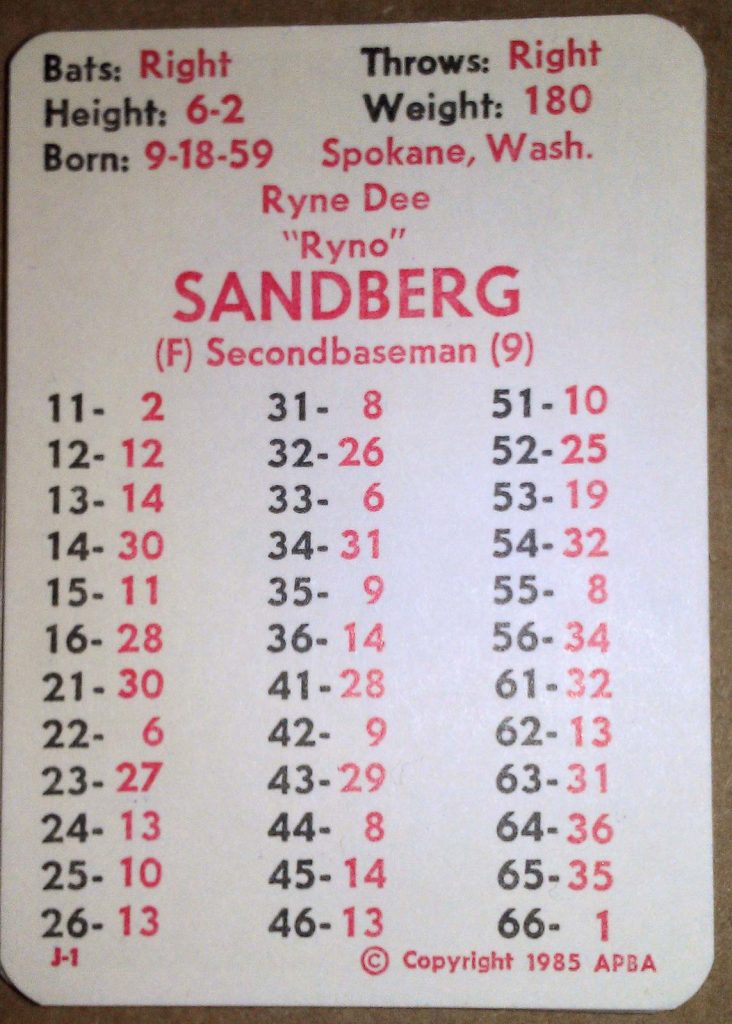
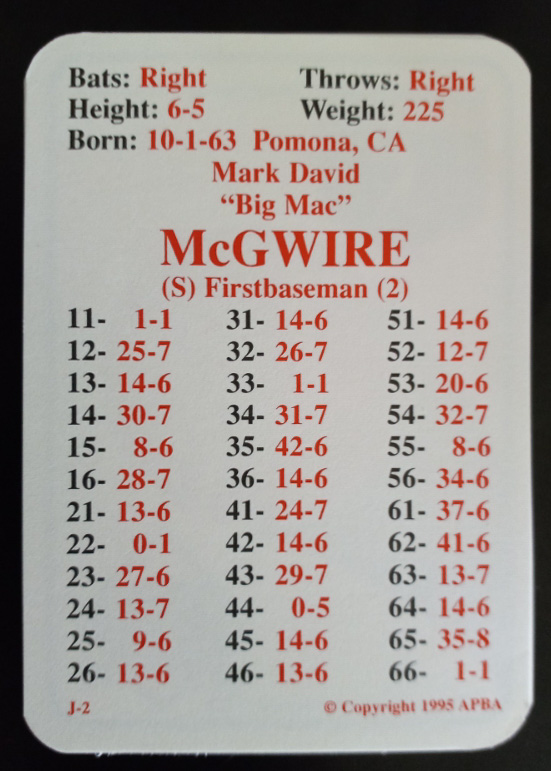
Unfortunately, exactly guessing what season the card represented by the copyright year was inconsistent. My theory is that APBA’s timing of the printing during the year must have varied. Some years, it may have of been done year after the MLB season.
Ryne Sandberg’s 1984 card above has a copyright date of 1985. On the other hand, Mark McGwire’s 1995 card must have been published the same year as it has a 1995 copyright date.
Anecdotally, it seems that printing was done on the same year more recently. Perhaps APBA found a more efficient printer.
Why the APBA 12 List is helpful
What was consistent was the changing of the 12. Each year, it was in a different spot and that made it helpful to determine the year of a card or even a whole card set. So to get to the whole point of this article, there is a guide for us in a pdf format. For each card set published up until 2011, this APBA Baseball Card 12 List and Publication Data (or ‘APBA 12 List’ for short). provides a bevy of information for each set including where the 12 resides.
To my knowledge, every season has a unique number which the 12 resides and unless there is a printing error, each player card receives only one 12 at that number.
Find the 12 and you should be able to find the season card set that card was from. Of course, this hasn’t been an issue in the past ten years as stats (along with the year represented) is printed on the card.
How to use the APBA 12 List
Essentially, you should be able to find the number where 12 is at and with some baseball knowledge, you should be able to narrow it down to the correct season or card set. Using the 1981 Mike Schmidt card as an example, take these steps:
- Look at the card and find the dice number the player result number 12 is located. In 1981 Schmidt’s case, he has a 64-12.
- View the APBA 12 List and find the 12 column (it’s the second one)
- Look for ’64’ in the 12 column. Most baseball fans know Schmidt played in the 1970s-80s so you can scroll down to that section.
- Find ’64’ in the ‘1981’ row.
There you have the answer! 1981.
Believe me, I personally have used this guide to double check cards in writing many posts for this website.
I have been sending the link to the APBA 12 List out so many times and feel it has been helpful so I wanted to give it a home with a bit of context.
A few final points
I am not taking credit for compiling all the data in the APBA 12 List. Doug Burg (click the link for an interview I did of Doug over ten years ago) did all the heavy lifting and gave me permission to host it on The APBA Blog (and many other places on the Internet). Thanks, Doug!!
[update: Doug saw this post and sent me an updated APBA 12 List! I’ve updated the List on this site as well. Thanks again, Doug!]
The APBA 12 List has some other interesting info including how many teams and cards were included with the set. On the right column and bottom, you find some cool trivia on when certain changes came to the APBA baseball game.
Finally, I remember when APBA made the change to the permanent 23-12. A lot of APBA fans including some in my league were thrilled to have it same spot every year. Me? I kind of liked the roving 12. I know it took some getting used to at the beginning of the season but it was APBA’s thing.
Hope this helps everyone!




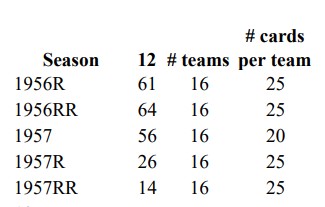
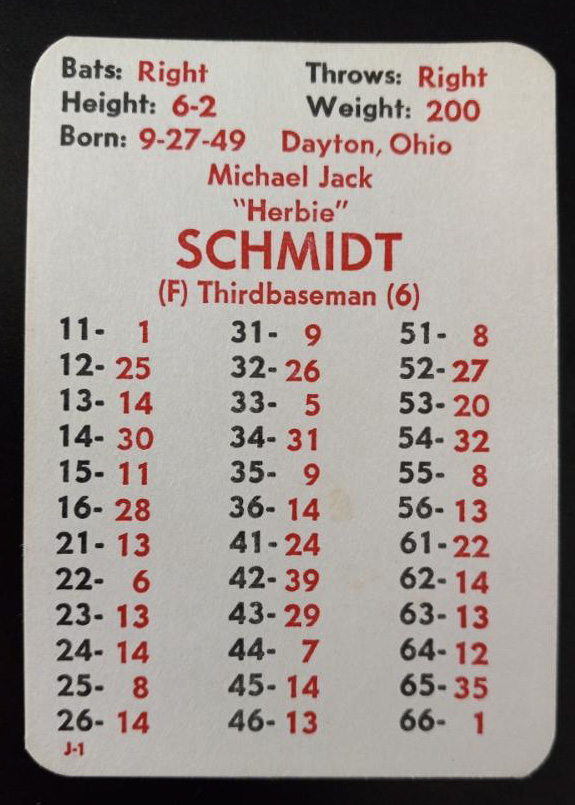
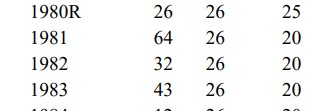
I am one of those who prefer the “no stats” on the card. It makes the player info less cluttered. I know for tournaments it makes life easier, but they could easily print that on the back like a baseball card.
But I know APBA will do as they wish, and for the most part do it very well.